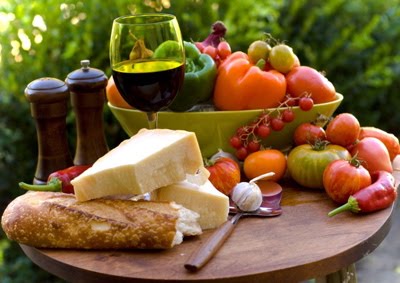
Musing on Australia Day about what is the typical Aussie fruit I thought bananas – no; mangoes – no; pineapples – no; Granny Smith apples – yes! The Granny Smith is the apple Australia gave the world. It’s great for cooking with, ultra-reliable, and it’s also crisp, crunchy and slightly tart – perfect to bite into on a hot summer day.
Apples are not seasonal in high summer, but with controlled atmosphere storage, (cool storage), we can have crisp, juicy apples pretty much all year round. And with the new, smaller, varieties of what my family call “Granny Miffs,” (a N-W coast Tasmanian pronunciation), you can have big ones for cooking and small ones for munching.
As a proud Tasmanian, I always understood the Granny Smith originated in the apple-growing areas of the Huon Valley, a self-seeded tree, mutated from apples tossed out by early settlers or explorers, (maybe even Bass & Flinders during their circumnavigation of the island), and discovered by a local woman, the eponymous ‘Granny Smith’, some time in the 1830s or 40s, long before her NSW namesake claimed the triumph. Alas, I can find no documentary evidence to back up this lovely legend! You can read about the ‘real’ Granny Smith here.
An apple a day keeps the doctor away
Granny Smith’s great-granddaughter Edna Spurway certainly thought so. She lived to 101, and was quoted in the Sydney Morning Herald as attributing her longevity to “good genes and lots of apples”.
What we now know is some of the reasons why a daily apple is so good for our health. Some 85 different studies have found that apples’ high levels of powerful antioxidants help protect the eater against cell-damaging free radicals, which could contribute to various cancers, cardiovascular disease, T2 diabetes and even asthma.
It’s amazing, but one standard apple contains more antioxidant power than one orange, half a punnet of blueberries or a cup of strawberries. Apples also contain useful amounts of calcium, potassium, iron and zinc, and on top of all that, they’re low GI. Plus, it’s much easier to walk out the door biting into a crisp juicy apple, with the juice spurting down your chin, than to eat the equivalent amount of strawberries or blueberries on the run. Even an orange has to be peeled!
Granny Smith – the world’s favourite cooking apple

I’m not sure if that’s 100 per cent correct; there maybe some regional apple varieties in other parts of the world that cooks swear by, but in Australia it’s certainly true. So, to the recipes:
Granny’s Apple Crumble
No, not Granny Smith’s, but my version of how I think my Scottish grandmother made apple crumble. She was an excellent cook, but she never shared her recipes, so when I came to make apple crumble for my young family after she'd died, I had to recreate it from taste memory, (with a little help from the English Women’s Weekly on rubbing the butter into the flour).
4 large green cooking apples
3 or 4 cloves, or ¼ teasp ground cloves
½ - 1 teasp ground cinnamon
About ½ cup of water.
Thinly slice the peeled and cored apples, place in a large saucepan with the spices and cover with the water. Be sparing with the water, you don't want the apples to become too sloppy. Stew gently until they are only just cooked. Stir in just enough sugar to taste – not too sweet. Put stewed fruit into a large oven-proof dish or lasagna dish.
Topping:
125 grams (4 oz) butter or margarine
½ cup of soft brown sugar
1 cup of plain (all purpose) flour
1 cup of instant rolled oats (quick cooking or microwaveable oats)
In a large bowl put the flour and the butter, cut into tiny cubes. Rub the butter into the flour using your finger-tips, until the mixture is like small breadcrumbs. This is messy work, but quite fun, and the rubbing action aerates the mixture. (Don’t use a food processor unless you’re absolutely pushed for time!) Stir in the brown sugar and the rolled oats, keeping the mixture as light as you can.
Spread the topping over the stewed apple; try to use a dish that enables you to have quite a thick crumble topping. Bake at 190C (375F) for 25-30 minutes, until crumble is golden brown. Serve warm or cold with cream, yoghurt or icecream.
Serves 4
Options: You can vary the crumble topping by replacing the oats or about 1/3 of the flour with coconut or any crunchy breakfast cereal. Using gluten-free flour and removing the oats makes it safe for coeliacs and people with gluten-intolerance. You could also replace the apple with any other stewed fruit or even tinned (canned) fruit or frozen berries, but then it wouldn’t be a traditional apple crumble! But still delicious.
More apple recipes to come!
Buon Appetito!

